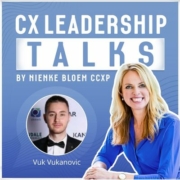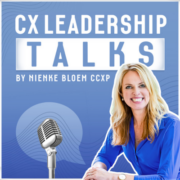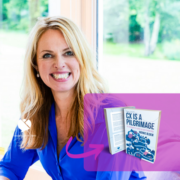What I learned at Disney Institute: my three major insights of graduating the course ‘Disney’s Approach to Quality Service’
Disney – we all know the brand, and I have visited their theme parks several times. Both in Paris as well as in Orlando. But how do they consistently deliver their Disney Magic? This year I decided to invest in myself and learn more and follow one of Disney Insitute’s courses. A separate company, dedicated to spreading Disney’s knowledge through training and advice.
I followed a One-Day course at Anaheim, the Disneyland location. The very first location of all Disney parks, where Walt Disney himself had his vision and where he put it in practice.
The whole day was well organized, starting very early with breakfast at 7:30 AM. From the moment I entered the training room, the Disney touch was there, including plenty of Mickey shaped confetti on the table. There was a workbook for all participants and a refillable Disney water bottle.
This program was focused on how to consistently deliver quality service to your clients, based on your own brand. This is exactly how I envisage my A.C.E. Strategy that I speak and write about:
Authentic experiences from your unique brand perspective, consistently delivered during the customer journey, by Employee Ambassadors who understand and can deliver the service to customers.
It was fabulous to see how Disney puts that into practice and together with 47 other participants, I learned all about this at Disney Institute. Besides the theoretical part, we also went into the park itself (although short) to see and experience the theory ourselves (also known as a Customer Safari).
I have written about ten pages full of insights, quotes and memorable stories. As you are probably not waiting for all of my notes, here are the three major insights I got from the course:
1. Purpose over Task
At Disney everybody is educated by the spirit of Walt Disney and learns about the common purpose of Walt Disney Parks and Resorts: “We create happiness by providing the finest in entertainment for people of all ages, everywhere” in short “Creating Happiness for Others”
It was interesting to learn the origin of this purpose, with a big role of new person to me: Van France, Founder and Professor Emeritus of Disney Universities. What was even more interesting, was that in the Disney Philosophy, every employee has the freedom to create happiness for guests. That means that in a service moment, where the guidelines are clear for a specific task, there is room to make an exception. The employee may decide to follow his/her gut and go for happiness instead. To be “off task” and “on purpose”.
They gave an example about a girl called Alice who visited the park. The Disney employee asked why she was sad, as she had a birthday pin on. So she told them that yes, it was her birthday, but all her friends had to cancel, because of illness and other appointments. But she decided to go to Disney anyway. The employee did all she could to create a special moment in a restaurant, where characters of Alice in Wonderland (see the alignment ?) were present and celebrated with her. Because, in Disney there are always friends and a birthday should always be celebrated.
Should the member of staff do this all the time? No. But was it appropriate at this moment and she had every reason to be “off task” (which was providing service at an attraction) and “on purpose” to go out of her way and arrange a perfect birthday celebration for Alice. Of course, Alice still visits Disney often, made new friends, and is an ambassador forever.
So the lesson here is: What is the purpose of your company and which are situations where your employees go the extra mile? Do you have such brilliant stories within your company; those everlasting customer stories that make you feel proud and cause a smile on everybody’s face?
2. Prioritize Quality Standards
When I am visiting companies, I am always interested in what they want to deliver to their customers. Often, we are creating a customer compass or a customer charter. With three to five (up to seven, but that is exceptional) customer promises or brand values that are specific for the brand and that align all employees towards the same customer experiences.
In Disney they have four Quality Standards, also known as “The Four Keys”. Courtesy, Safety, Show and Efficiency. A very interesting assignment during the course, was to prioritize these four keys. Because, in the way Disney teaches their employees, they need to know what is important to make consistent decisions. So each of these standards is equally important (don’t ever say the fourth is least important… ?), but there is a logical Disney order. And that is
- Safety
- Courtesy
- Show
- Efficiency
This sounds so logical to apply a prioritization, but I have never done it this way. So from now on, prioritization will be added as an option to the Nienke Bloem CX toolkit.
3. Seriously organize your service recovery
Things can go wrong. Even at Disney things go wrong, but they make it their task to recover what needs to be recovered. I like the description: “Service Recovery is an event that occurs when the customer’s expectations are not met.”
For Disney it is important to pursue the relationship with the customer, which has great impact on their view of service recovery, or as I see it named in companies’ “Complaints” procedures. At Disney they don’t want to just resolve the issue, but they want to reconciliate the relationship.
Because guests are likely to care just as much – if not more – about how they are treated following the service failure as they care about the outcome of a service recovery itself.
So what Disney has done is to put processes and systems in place on service recovery. Of course they also have the outer loop and are continuously improving their operations and systems, but as they pursue the same consistency in service recovery as in their daily service, they have thought about everything.
On this topic we had a guest speaker who told so many compelling service recovery stories, that really proved that Disney has this under control. And she closed off with the following: “Things can go wrong, they might not be our fault, but they are our problem.”
The ownership of service issues, of things that went wrong, that is where Disney steps up and makes the difference.
My question for you, is how are service recovery processes organized in your company? Do you have the same drive for service recovery and do people take ownership? Is the How(the way) just as important or maybe even more so than the What (the solution)? If you can answer: “Yes!”, hurray for you, as you joined Disney in customer obsession. If you have to answer: “No”, you’ve got work to do!
These were my three major insights and I will take them along and incorporate them in my consulting, writing, presenting and teaching practices. So, you can expect more on Disney and my findings in the common months.
Disney rocks! They want to differentiate themselves from the market. They are a premium brand and strive for consistent delivery of their four quality standards every day. I want to challenge you to go the Disney way. Is there one of these three insights, that spark your imagination and make you ambitious enough to step up the customer experience in your company? Reach out to me or please share in the comments which of the three insights it is for you, so I also learn which appeals the most.
Don’t want to miss any of my blogs? Then subscribe to my weekly CX Greetz!
*****
Nienke Bloem is often called the Customer Experience speaker in the blue dress.
She’s a global CX thought leader, educator and a global keynote speaker who inspires audiences with best practices and proven methodologies. She leads a speaking practice, a CX game company and a training business; she breathes Customer Experiences and is author of two CX books.
Her two-day Customer Experience Masterclass is known as the best program to prepare for your CCXP and she is the go-to person voor CX leaders who want to advance their leadership and bring direct results from their Customer Experience transformation programs. Since 2020, she hosts a CX Leadership Masterminds program and helps leaders spice up their leadership and deliver an engaging CX Story including a solid CX Strategy. Besides, she is a modern-day pilgrim and found the parallel with leading customer centric transformations.
With her over 20 years corporate experience, she speaks the business language. Her keynotes and education programs in Customer Experience are inspiring and hands-on. She is one of the few Recognized Training Partners of the CXPA and it is her mission to Make Customer Experience Work and help you deliver business results.








